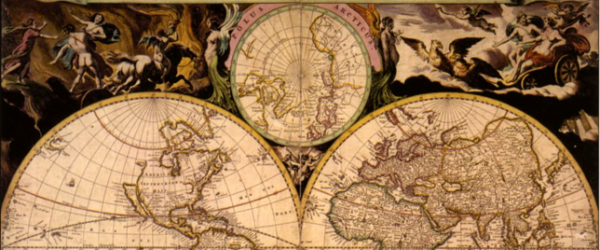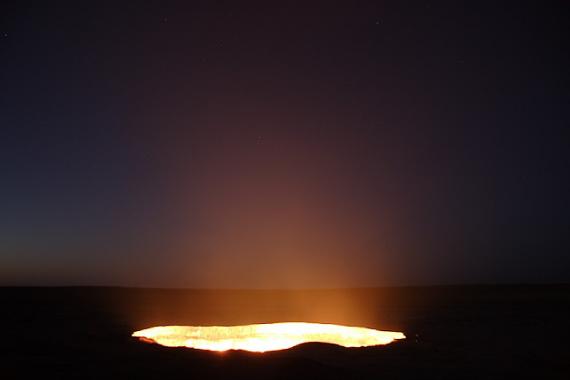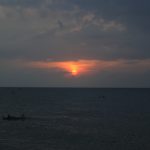
The Way of the Atlas (Obscura)
Culture, DigitalIt seemed only fitting that I first met Seth Teicher in the Middle East, both of us in the midst of our own crazy-fun Israeli adventures. I say it seemed fitting because Teicher works for a website that is all about traveling and discovery. Atlas Obscura is the site you go to if you want to escape the space, the city, the country, the continent you currently inhabit and take a trip to the other side of the world. Whether it’s a 328-foot wide hole in the ground that’s been burning for 40 years in Turkmenistan, or a Canary Island community that communicates through whistles, Atlas Obscura is a place for the imaginative, for the inquisitive, for the open-minded.

“The basic idea came from a desire to bring all the curious, unusual and wondrous places that are found all over the world and never existed online in any one place, all under one roof,” said Teicher, who has been with Atlas Obscura from the beginning and is their vice president of business development and social media. “The aim was to catalogue and discover all the astounding places all over the world.”
It’s a site about renewing (or continuing) your curiosity with the world around you. The Atlas’ aim is to remind you that despite the Google Earths and detailed maps of today’s advanced technology, there are still many incredible, undiscovered corners of our world.

The Root Bridges of Cherrapunji
“It’s a guide to the most unusual places in the world,” Teicher says on the phone from Brooklyn, New York, where the Atlas just opened its headquarters. “Cataloguing giant flaming holes in the middle of the desert, bridges grown out of roots in India, things that make you in awe of how amazing and astounding the world is around you; curious narratives that exist both large and small, in your neighborhood and across world.”
But what, exactly, is considered Atlas-worthy? According to Teicher, it goes beyond the attractions themselves, delving into the stories behind them.
“We’re trying to ask a deeper question, something about the narrative that excites the idea of wonder in the truest sense of the word,” Teicher explains. “We like to think of places on the Atlas as the unusual or curious sort; it has to have something that makes you go, ‘Wow, I can’t believe this exists.’ It can be a completely popular place but I think having a deeper narrative behind it is what we’re trying to uncover.”
The website was launched in July 2009 by Joshua Foer and Dylan Thuras. Since then it has gained incredible momentum, with tons of fans – nearly 35,000 on Facebook – and contributors. The atlas is designed as a Wiki-style collaborative site where anyone (anywhere) can post about a cool place they heard about or visited. This, says Teicher, helps to build a community of like-minded people who share a passion for the wonders of the world. Still, nothing actually makes it onto the site until it has gone through an editor and a rigorous fact-checking process.

The Gates of Hell in Turkmenistan
“We want to make sure that we do a thorough job; our aim is to be the credible voice of curiosity and the definitive guide to these unusual places,” says Teicher. “We stand by what we write; if we find out something’s closed or changed, we amend it. And we’re happy to have that collaboration within the community and the world. I’d say the vast majority of the time we’re spot on, and we’re getting better every day.”
And as far as building up that community goes, the site has done an incredible job of inspiring people and mobilizing them to continuously discover the hidden gems of the world. The team organized the Obscura Society, a group of people who go on expeditions in various cities, mostly right now in America, such as ghost ship tours or urban foraging expeditions. And beyond that, Atlas Obscura organizes a now annual Obscura Day that, in only its second year, successfully organized 103 events spanning across all seven continents.
“It’s a global celebration of wonder and curiosity,” Teicher says. “Thousands of people and hundreds of events all over world all on one day.”
For Teicher personally, the site is so dear to his heart because it invokes that childish wonderment that we all grew up experiencing through storytelling and make-believe. Only with the Atlas, the people and places are real.

Bologna's Instituti di Anatomia Umana Normale
“It’s important to me because I think that I value the idea of being surprised and believing the world is undiscovered and unknown,” he says. “What inspires me so much about Atlas is that it [instilled] in me with a sense of wonder and the idea that there’s a tremendous amount to be discovered … There’s this practical guide I can use on my travels or I can get lost in the depth of the Atlas and browse to my content, so it’s both a tool and an inspirational platform.”
Atlas Obscura is the world’s magnifying glass, the peoples’ telescope; it’s a modern twist on our age-old needs to satisfy our curiosities and celebrate our discoveries. A site that inspires the masses as well as the individual, the Atlas is, quite literally, by everyone and for everyone. It’s the peoples’ collective of past, present, and, perhaps, even future. No one knows exactly what’s out there. All we know is that it lies waiting for us to find it.






















